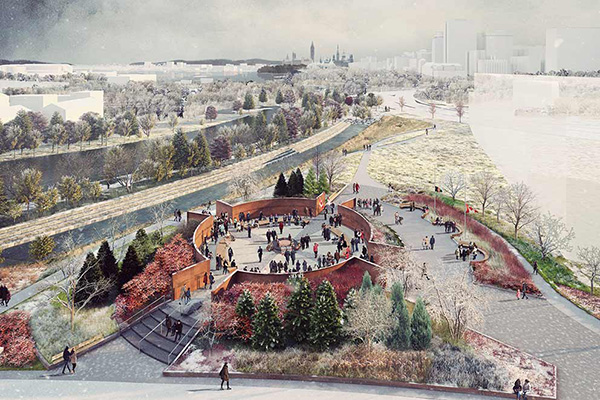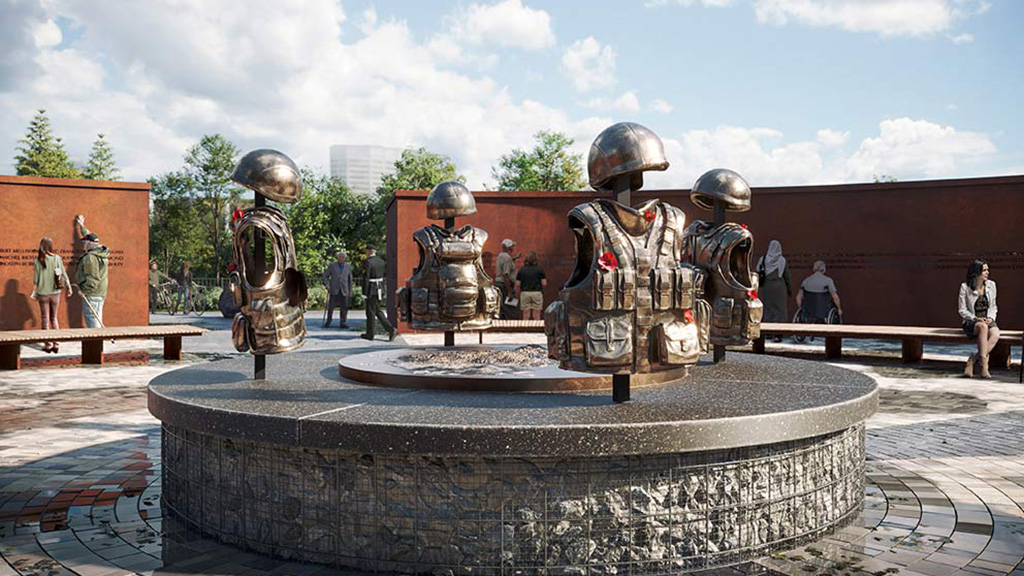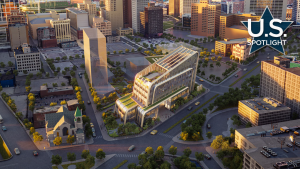OTTAWA — Veterans of the war in Afghanistan were influential in choosing the final design for a monument that will memorialize Canada’s contributions in the conflict.
After narrowing it to five choices, the federal government asked a jury to select the winner and asked the public for input.
More than 10,000 people responded to an online survey, and a great many of them served in Afghanistan or were family members of those who served, said Veterans Affairs Minister Lawrence MacAulay.
They overwhelmingly preferred a design put forward by Team Stimson: a circular space inspired by an Indigenous medicine wheel, sectioned into four parts, with an inner sanctuary featuring four bronze flak jackets hanging from crosses.
So when the jury made a different selection, it was overruled.
Artist Adrian Stimson, a member of Siksika First Nation in Alberta, is perhaps uniquely qualified to create such a monument.
A former member of the Armed Forces, Stimson joined the Canadian Forces Artists Program as a civilian in 2010 and spent time in Afghanistan, observing how the troops lived and interacted with their surroundings.

“While I was there, I became interested in the physical materiality of the bases, the industrial nature of embedding troops into the theatre of war,” Stimson said June 19 as his design was unveiled at the Canadian War Museum.
“Mimicking this, the monument is a place to be discovered and to be revealed. The monument enlivens as you approach on a meandering pathway, revealing itself slowly, with purpose.”
Three quadrants of the monument will include the names of the 158 Canadian military members who were killed in the conflict. The fourth, which faces in the direction of Afghanistan, is meant to honour Canada’s relationship with the Afghan people.
The monument is set to be built in the Lebreton Flats area across the street from the War Museum, near the National Holocaust Memorial.
It could take another two or three years to finalize the design and construction, Stimson said, adding to what has already been a years-long process.
“We have sought guidance from Indigenous elders, made connections with both past and present military personnel and families,” he said.
The monument was promised by former Conservative prime minister Stephen Harper in 2014, and on June 19 the Tories accused the Liberal government of stalling the project.
The 13-year mission in Afghanistan involved more than 40,000 Canadian Armed Forces members.
MacAulay said he “cannot imagine” what it was like for the families of those members who waited at home.
“(The monument) will be a place to capture your memories, a place of reflection, and a place to gather to remember those who never returned,” he said.
International Development Minister Harjit Sajjan, who served as a lieutenant-colonel in Afghanistan, said the design captured “the essence of that mission.”
“This is not the future that we had hoped for Afghanistan,” he said, referring to the 2021 takeover of the country by the Taliban.
“But despite the current conditions in Afghanistan, we must not lose sight of the fact that Canadian and international efforts helped a generation of Afghans.”
An estimated 47,245 Afghan civilians were killed in the conflict between 2001 and 2021, along with 66,000 national police and military members and more than 51,000 Taliban and opposition fighters.
© 2023 The Canadian Press











With absolutely no disrespect to the many men and women whom serve in all branches in the armed forces. Nor to the families of those who serve or have lost loved ones during the Afghanistan occupation. I find it a bit redundant that Parliament has finally decided to step up to place a memorial in Ottawa, after there is already in place. Directly across from Canada’s largest Air Force Base(where all repatriations occurred), in Quinte West Ontario, an (at very least) equally inspiring memorial exists. Where for many years already now people have gone to reflect and pay respect to those that have and continue to serve this great nation and the lives lost during the Afghanistan War.